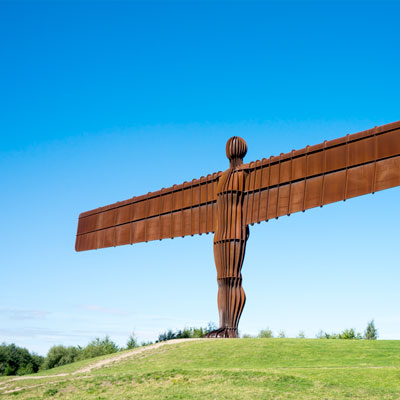Weathering steel refers to a group of low carbon steels which have additional alloying elements combined with iron and carbon atoms. The elements are alloying and offer increased strength for weathering steel and higher corrosion resistance than standard carbon steel grades.
The Composition of Weathering Steel
Because weathering steel is low in carbon, it generally has lower than 0.3% carbon by weight, meaning it can remain both tough and ductile. Weathering steel is also made up of other alloying elements (nickel, copper, and chromium) which increase the strength and corrosion resistance.
Applications of Weathering Steel
As weathering steel outlasts standard carbon steel in outdoor conditions, it is often used in exposed steel structures. Using weathering steel means there is no need for constant repainting and recoating of steel as the protective rust coating slows corrosion rate. This means that by the time the structure (such as a building or bridge) had corroded enough to be considered unsafe, it would have already exceeded design life for other reasons.
Weathering steel does not work well in environments with high amounts of chlorine as the protective rust layer cannot withstand high amounts of corrosives. However it finds frequent use in building and architecture, art and sculpture, in gardens and as exterior wall paneling.

10 Facts about Weathering Steel
- Weathering steel is corrosion-resistant and extremely strong. Compared to other steels, weathering steel has a higher resistance against atmospheric corrosion as its protective coating inhibits further corrosion.
- Weathering steel has a longer life-span than bare cold rolled steel.
- Weathering steel also is more cost-effective as it saves money on painting and rust-prevention maintenance. There is no need to paint or treat weathering steel.
- When weathering steel is first installed it is black and shiny. Once it has been exposed to some weathering, it turns streaky yellow, then orange and then a dark-brown color can be seen after 10+ years.
- Weathering steel continuously rusts for an extremely long time. The process is fast to begin with but slowly decreases over time.
- The mixing of a specific blend of steels and alloys produces weathering steel. It is this combination that improves the rusting properties to provide the well-known oxidized dark brown look.
- Regeneration of weathering steel ends when the pores at the rust and steel interface are clogged by the alloying elements in the steel and their production of insoluble compounds.
- Although weathering steel is only ¼ inch thick when produced in sheets, it is both durable and sturdy.
- Weathering steel should not be used for roofing or siding when used in architectural or building applications
At Masteel, we supply weathering steel in a range of thicknesses and a variety of plate widths. We offer global shipping and a fast turnaround on orders. If you would like to find out more about the weathering steel we stock, contact us today for more information.
